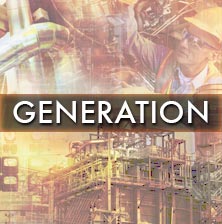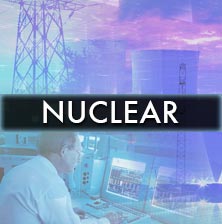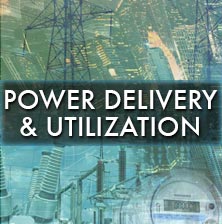The following is a small selection of items recently published by EPRI. To view complete lists of your company-funded research reports, updates, software, training announcements, and other program deliverables, log in at www.epri.com and go to Program Cockpits.

This is a review of studies between 2007 and 2015 evaluating the use of light to aid downstream passage of adult eels at hydropower projects. It includes primary literature (peer-reviewed and published in journals) and unpublished studies.

This research quantified the corrosion of buried structural steel at solar power plants. Researchers analyzed soil samples from an Arizona solar farm and used the results to model the soil corrosivity for steel and zinc.

Traditional heat treatments used in production of parts made of alloy 718 may not be optimal for the corrosive, irradiated environment of pressurized water reactors, potentially leading to fuel assembly component degradation. This study evaluated 11 different thermo-mechanical treatments for alloy 718 for their ability to reduce susceptibility to stress corrosion cracking and irradiation-assisted stress corrosion cracking.

Over the past two years, EPRI and its utility members launched more than two dozen demonstrations across the United States and Europe to test emerging technologies to integrate central and distributed energy resources. This report discusses insights and lessons from this work.

Utilities use load shapes for forecasting and planning energy efficiency and peak-shifting programs. This study compares two methods for measuring residential end-use load shapes: end-use metering and the use of conditional demand analysis (a statistical technique) to disaggregate hourly-metered residence loads.

In boiling water reactors that inject zinc into the reactor feedwater, the presence of silica is a concern because formation of zinc silicate can potentially increase corrosion of fuel cladding. Deposition rates on reactor surfaces cannot be determined due to a lack of feedwater silica data. In this study, researchers developed and demonstrated a model to determine silica concentration in feedwater, with the goal of quantifying silica deposition in the reactor core.

This guide provides information on electric vehicle models available as of February 1, 2017 and answers common consumer questions.

This is an update on EPRI research on sensors and data analytics for transmission and distribution, including field demonstrations and technical insights.

This report is an overview of energy storage technologies, applications, cost and installation estimates, and regulations and policies to encourage deployment.

Drawing from nuclear plant operating experience between 1970 and 2015, this report provides updated information on piping system failure rates and rupture frequencies for use in probabilistic risk assessments.

Through a literature review and laboratory tests, this study evaluates on-line health monitoring for electric generators, with a focus on methods involving measurements of electrical parameters.

This study used an experimental recirculating water loop to evaluate the effectiveness of a film-forming product on mitigating flow-accelerated corrosion in power plant components.